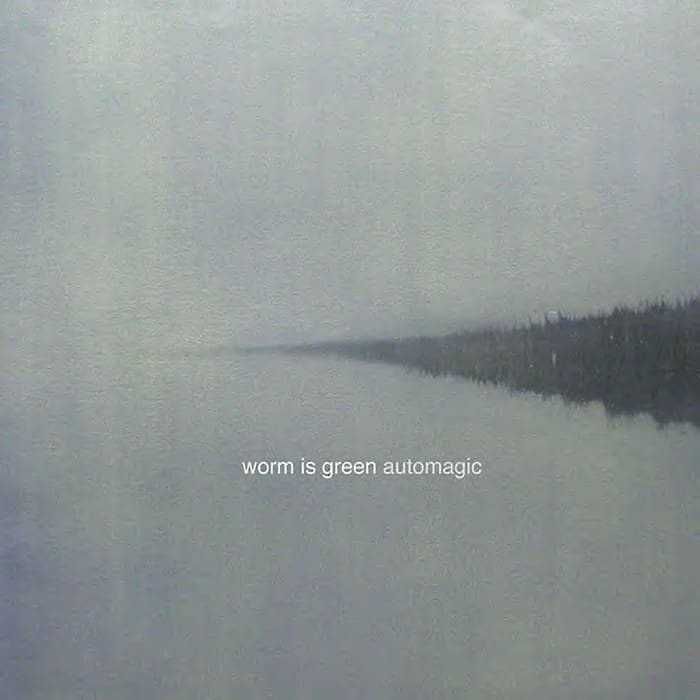Automagic by Worm Is Green (Review)

When we look back on the musical climate of the late ’90s, and even the early ’00s, I think we can all agree that few of us could have foreseen the nigh-embarassing overabundance of inspired music that would soon begin emerging from Iceland. Sure, there’s always been Björk and before her, the Sugarcubes. But in the past few years we’ve seen the likes of Gus Gus, Leaves, Múm, Sigur Rós, and Singapore Sling all emerge from whatever secret, geothermally-powered location they were hiding in to great critical and popular acclaim.
While some have fallen by the wayside (has Gus Gus released anything of note since their 4AD days?), and others (Quarashi) failed to make much of splash (thankfully), others (Múm, Sigur Rós) are still on the rise several releases into their career, with no slowing down in sight. Heck, even ancient Icelandic folk music (known as “rimur”) is now officially cool, thanks to Sigur Rós’ performances and collaborations with Steindór Andersen.
With their debut album, Worm Is Green certainly stand poised to bring further glory to their homeland, adding to its reputation as a hotbed for intriguing new musical acts. Of all of their Icelandic countrymen, Worm Is Green is closest in sound and spirit to Múm. Like Múm, Worm Is Green does an exemplary job of blending electronic soundscapes with real, organic instrumentation and dreamy female vocals (courtesy of Gudridur Ringsted).
However, Worm Is Green’s sound, as atmospheric as it might be, never quite achieves the same wide-eyed, childlike sense of wonder that suffuses Múm’s music. Rather, Worm Is Green’s sound takes on a colder, chillier sound (at certain times reminscent of the darker moments of Gus Gus’ Polydistortion, such as “Is Jesus Your Pal?,” minus the groove). Their beats are crisp and sharp, like the sound of crunching across the surface of half-frozen snow or of icicles crackling and snapping. Their synths and atmospherics take on a wintry aspect also, at times sounding like silvery snow flurries and at other times like they’re carved from slush and ice.
The album opens with “Automagic,” which does a good job of acclimating you to the colder clime in which the band operates. Glittering, icy spangles of sound swirl amongst crisp, chattering beats as a thick, dense bassline pulses away off in the distance. Ringsted’s voice appears on “The Robot Has Got The Blues,” and it’s obvious that the Múm comparisons shouldn’t be taken to heavily. Unlike the lilting, sing-song voices of the Valtysdottir twins, Ringsted’s voice is stiffer and more detached, as if she’s singing from the depths of hypothermia. Which works perfectly on the band’s cover of Joy Division’s classic “Love Will Tear Us Apart.”
Seeing that title listed on the back of the album was, I’ll confess, an immediate red flag, and the first few listens were a bit jarring to say the least. But the more I listened to it, the more it came together and made sense. The band slows the song down considerably, replacing Peter Hook’s urgent bassline with a glacially-paced synth and burying the song beneath sheets of icy atmosphere. Meanwhile, Ringsted pulls off a convincing female Ian Curtis impression, her vocals as haunting as they are empty and detached.
On “Undercover,” the band lets a little more warmth flow into their music, as does Ringsted. Her airy voice drifts amidst layers of fluttering dulcimer-like tones, chirping rhythms, and Vilberg Jonsson’s bass, which creaks and groans like a pack of icefloes caught in a sudden thaw.
Some of the band’s more compelling material comes during the album’s ambient, less song-based moments — but this also happens to be the album’s darkest and most daunting material. “Sunday Session 3:04” is the heaviest and most abrasive track on Automagic, full of dark, thick drifts of sound and grey, foreboding synths. Shiny, metallic beats swirl about, along with bits and pieces of glitch and other sonic shards, giving the song a spiky, prickly surface.
“Drive Thru” serves as the perfect soundtrack for the fog-enshrouded jut of land depicted on the album cover. The song’s opening moments are reminiscent of Tear Ceremony’s music as strange, eerie atmospherics give the sensation of fumbling through a mist-filled forest, one full of all manner of unseen and alien creatures (which can be heard cooing and whistling off in the distance). Faint pulses and rhythms slowly begin to emerge, suggesting some sort of path that serves only to lead you even deeper in. By the song’s second part, you’re hopelessly lost and the mist is lifting, revealing the once-hidden alien sounds in all of their strange glory.
“Walk Thru” and “Small Reverb” continue along the same line — only this time, the bubbling synths and murky textures suggest some underwater locale. Perhaps some deep, green Artic pool in which you float, frozen in place, while giant icebergs grind and scrape against each other, threatening to crush you between their giant, hulking masses.
After all of the foreboding sounds, the album closes with the gentle “Amazing Things,” which, with it’s pure, clean vocals and softly plucked guitar tones, captures the mood of This Mortal Coil, if not the sound. It’s almost a relief to hear Ringsted’s voice, and the song has a reassuring feel to it after the recent icy depths you’ve gone through.
Worm Is Green has been honing their sound since 2000, and it shows. The album feels incredibly well put-together, the textures and sonics clean and precise. However, some might find the band’s sonic palette, which definitely leans more towards the colder and abrasive end of the spectrum, a bit too heavy and foreboding, especially if they’re expecting something along the lines of Múm or (as Thule Musik’s website suggests, somewhat erroneously, IMHO) Saint Etienne. However, those seeking yet another example of the apparently boundless creativity that seems to reside in Iceland these days would do well to add Worm Is Green to their list.